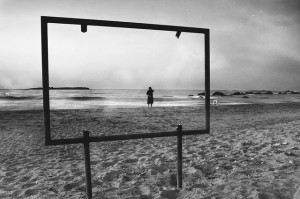Public History on the Edge of Nowhere: A working group report
13 July 2015 – Shae Adams

Photo credit: Giannis Angelakis
Our “Public History on the Edge of Nowhere” working group consisted of individuals from institutions that face issues of isolation due to physical location or a lack of awareness by the surrounding communities. In Nashville at the 2015 National Council on Public History conference, we sought to facilitate a group discussion centered on developing creative solutions for institutions lacking direct access to large populations.
When we convened in Nashville, our discussion highlighted the need to re-align the narratives our institutions tell to better meet the needs of local communities. In most cases, this entails drawing attention to stories that already exist at the site but currently receive little, if any, interpretation. Such narrative shifts could include stronger interpretation of labor history in rural areas, issues of race and slavery within house museums, or expanding the stories told in historical society exhibit areas. This interpretive shift to tell a more complex story could serve to create spaces more meaningful to local communities, thereby increasing local awareness and support.
In order to sustain that support, several participants pointed to the importance of hosting a variety of community events at our institutions even if those events do not directly relate to the stories told in exhibit space. Doing so allows historic institutions to act as participants within communities rather than as disconnected entities. By engaging with the community, isolated sites can draw in new supporters who may have otherwise never been enticed to support a “stuffy old museum.” Our discussion acknowledged that in some cases, hosting non-exhibit-related events may involve a widening of mission statements to better serve our audiences.
The group ended with a discussion of marketing options for gaining attention. Our participants agreed that social media serves as a powerful tool to pique public interest in upcoming programs. Platforms like Facebook and Twitter assist isolated institutions in attracting visitors who may have little to no idea that a museum exists within their area. Social media can also help keep past visitors engaged with the life of the institution even if physically traveling to the site is not always possible. Additionally, we found ways in which artifacts can play a role in shaping social media outcomes by adding a level of fun engagement that humanizes a site’s interpretative mission.
However, some participants noted the difficulties associated with social media usage. In particular, participants explained the issues that arise when a site, due to partnership and ownership agreements, does not have the power to control its own social media output. For instance, a site overseen by a Parks and Recreation agency may not be permitted to create its own Facebook page. Other members of the group suggested social media workarounds such as creating pages associated with museum events or finding ways to further partnerships with those who currently control social media content.
Several participants made a point of noting the continued importance of garnering traditional media attention through partnerships with local radio and television stations. In some ways, museums on the edge of nowhere have the advantage of fewer competing stories, making it somewhat easier to appear on the radar of local journalists. Actively seeking out opportunities to advertise upcoming programs on local television and radio stations remains an excellent method of keeping local residents informed. Inviting journalists from community newspapers to attend events can also help small museums gain more attention from nearby residents. Participants agreed on the great importance for isolated sites of engaging with as many media as feasible to increase the likelihood of connections with current and potential audiences.
We found our time together in Nashville to be fruitful and plan to continue our conversations through further use of the blog and email communications. Several participants made a proposal for a follow-up panel at the 2016 annual meeting in Baltimore. The dialogue will continue, and the participants invite other public historians on the edge of nowhere to contribute to the discussion freely.
~ Shae Adams is the Curatorial Assistant at the WK Gordon Center for Industrial History of Texas, a component of Tarleton State University, in Thurber, Texas. She co-facilitated the “Public History on the Edge of Nowhere” Working Group with Courtney Hobson, Program Assistant at the Maryland Humanities Council.



